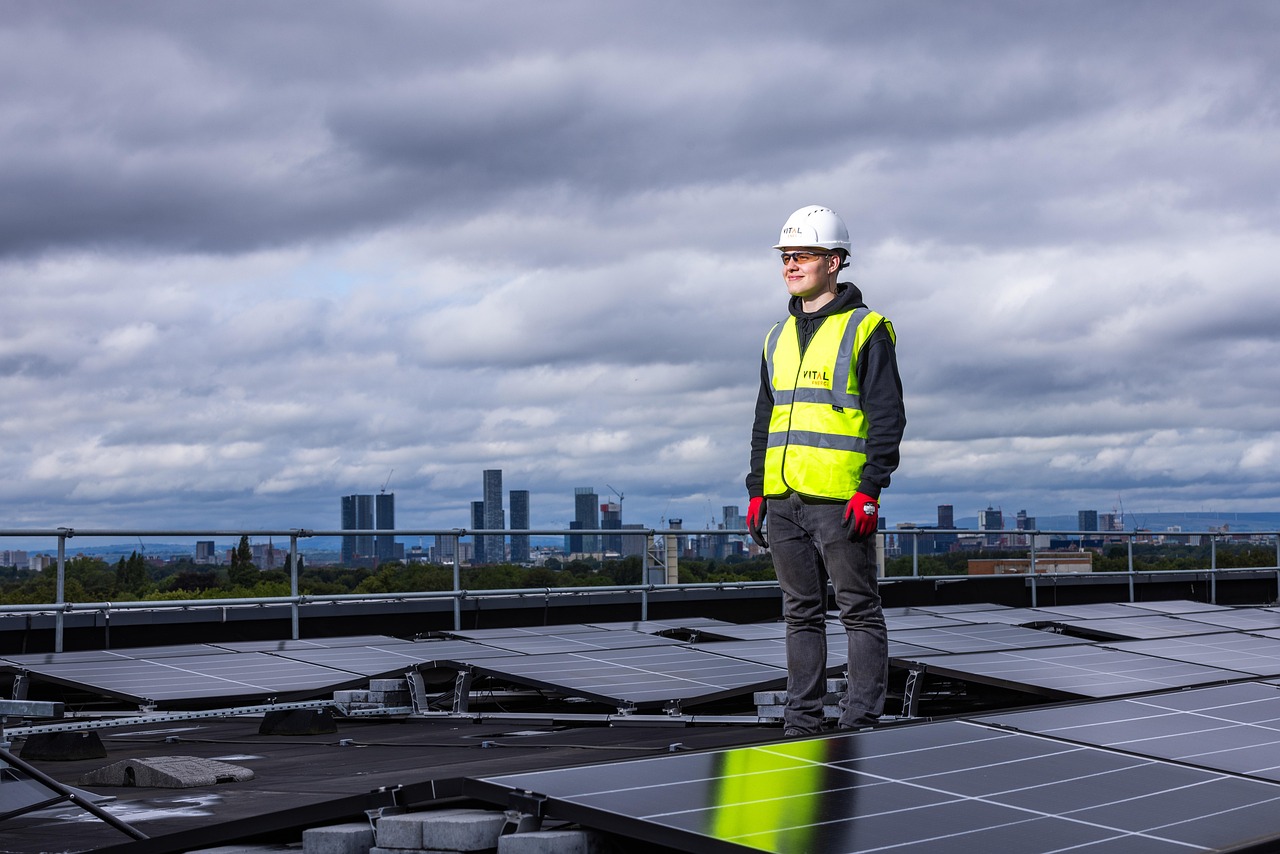Photovoltaic glass is a material that combines transparent glass with solar energy technology to generate electricity while allowing light to pass through. It serves as both a building material and a power source, integrating solar cells within the glass panels used in windows, facades, and skylights.
This innovation enables buildings to produce clean energy without sacrificing natural lighting or aesthetic appeal. By embedding solar cells directly into the glass, photovoltaic glass turns ordinary surfaces into energy generators.
It is becoming increasingly relevant in sustainable architecture and urban planning, offering a practical solution for reducing energy consumption in commercial and residential buildings.
Understanding Photovoltaic Glass
Photovoltaic glass combines energy generation with structural elements. It integrates solar technology directly into glass, allowing buildings to produce electricity without separate panels. Key aspects include its operation, variations, and the materials enabling this dual function.
How Photovoltaic Glass Works
Photovoltaic glass converts sunlight into electricity using embedded solar cells within or on the glass surface. These cells absorb sunlight and create an electric current through the photovoltaic effect.
Two main configurations exist: laminated and coated glass. Laminated versions sandwich solar cells between glass layers, protecting the cells and enabling use in windows or facades. Coated glass uses thin films applied to the surface, simplifying manufacturing but often producing less electricity.
The transparency level varies, balancing light transmission with power generation. This balance impacts both energy output and daylighting inside buildings.
Types of Photovoltaic Glass
Photovoltaic glass types include:
- Crystalline Silicon Glass: High efficiency, uses traditional silicon cells, typically less transparent.
- Thin-Film Glass: Uses materials like amorphous silicon or cadmium telluride, offering flexibility and higher transparency but lower efficiency.
- Building-Integrated Photovoltaics (BIPV): Custom-designed to replace conventional building materials like windows or skylights, focusing on aesthetics and energy production.
Selection depends on application needs, budget, and desired energy output.
Key Materials and Technologies
Key materials in photovoltaic glass are:
- Silicon Cells: Monocrystalline or polycrystalline silicon dominate for efficiency.
- Transparent Conductive Oxides (TCOs): Thin layers like indium tin oxide help conduct electricity while allowing light through.
- Encapsulation Layers: Protect cells from weather and mechanical damage, usually made from polymers or specially treated glass.
Technologies include thin-film deposition, lamination, and innovative coatings tailored to maximize light conversion while maintaining structural integrity. Emerging materials like perovskite are under development for improved performance.
Applications and Benefits of Photovoltaic Glass
Photovoltaic glass combines energy generation with functional design, impacting various sectors. It is especially effective in urban environments where space and aesthetics matter, offering renewable energy without sacrificing natural light or architectural style.
Integration in Building Design
Photovoltaic glass can replace conventional windows, facades, or skylights in commercial and residential buildings. It allows seamless integration of solar panels into the building envelope, enabling façades to generate electricity without additional space requirements.
Architects use it to meet energy codes and green building certifications. The glass maintains transparency levels, ensuring interior daylighting while reducing reliance on artificial lighting.
This technology supports versatile designs:
- Frameless panels for modern aesthetics
- Colored or textured options for visual appeal
- Adaptability to slanted or curved surfaces
Its installation is compatible with standard glazing systems, facilitating retrofits and new constructions alike.
Energy Efficiency and Sustainability
Photovoltaic glass contributes to substantial energy savings by generating electricity onsite, cutting down grid dependence. It reduces heat gain through selective light absorption, lowering cooling loads in buildings.
By integrating solar cells within the glass, it minimizes material use compared to traditional solar panels and streamlines roof space requirements. This dual functionality supports energy-positive buildings.
Sustainability benefits include:
- Lower carbon footprint by offsetting fossil fuel usage
- Minimal maintenance due to durable materials
- Longer lifespan compared to some rooftop panels
These factors make photovoltaic glass a practical component in net-zero building strategies.
Market Trends and Future Outlook
The market for photovoltaic glass is growing rapidly, driven by increasing demand for green construction materials and stricter energy regulations globally. Costs have been decreasing due to advances in production and materials science.
Emerging trends include:
- Integration with smart glass technologies for adaptive transparency
- Higher efficiency thin-film solar cells embedded in the glass
- Expansion into transportation, like solar-powered vehicles and public infrastructure
Investment in research aims to improve durability and energy conversion rates. Industry forecasts predict sustained growth as urbanization and climate concerns push adoption further.




Leave a Reply